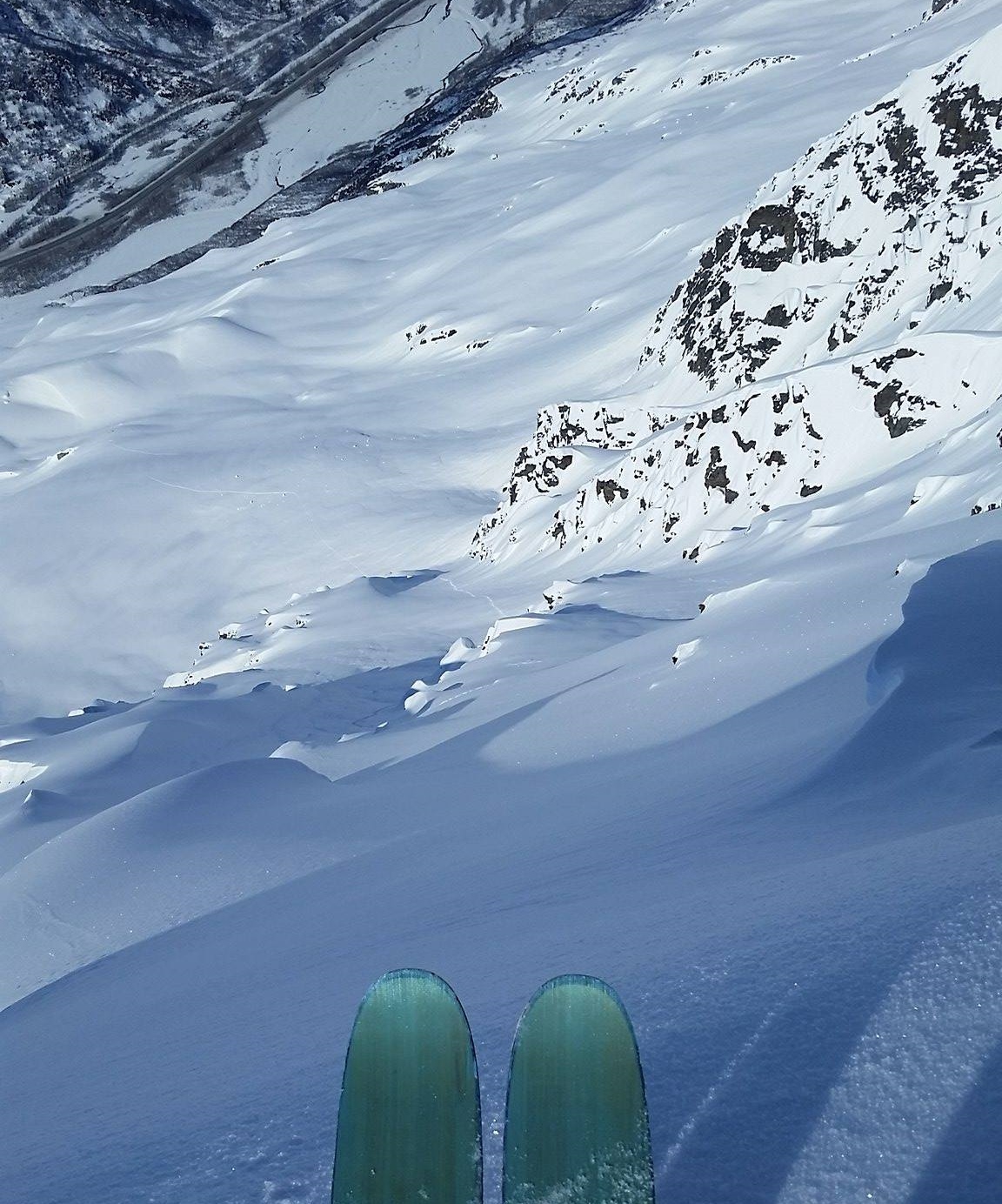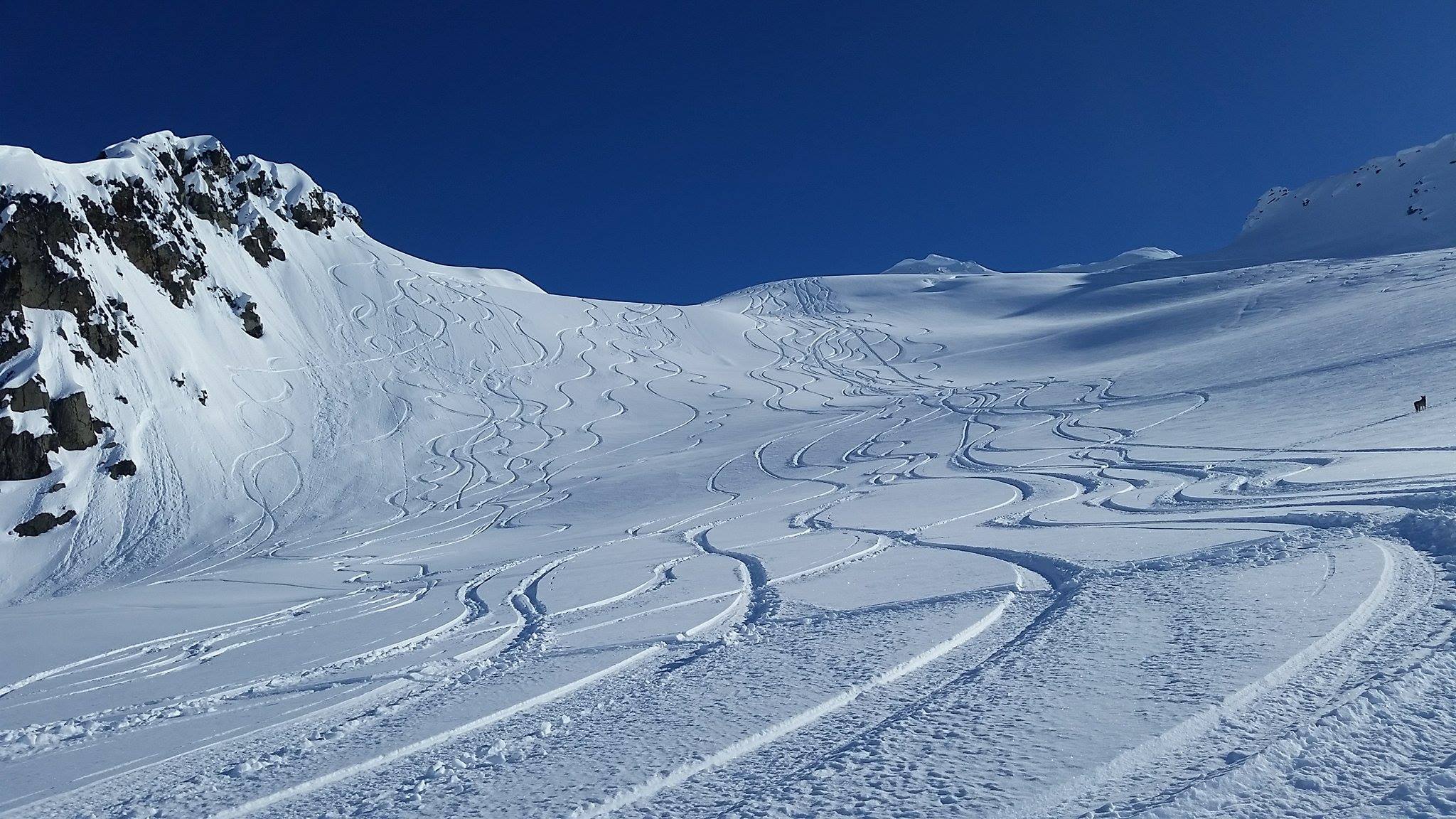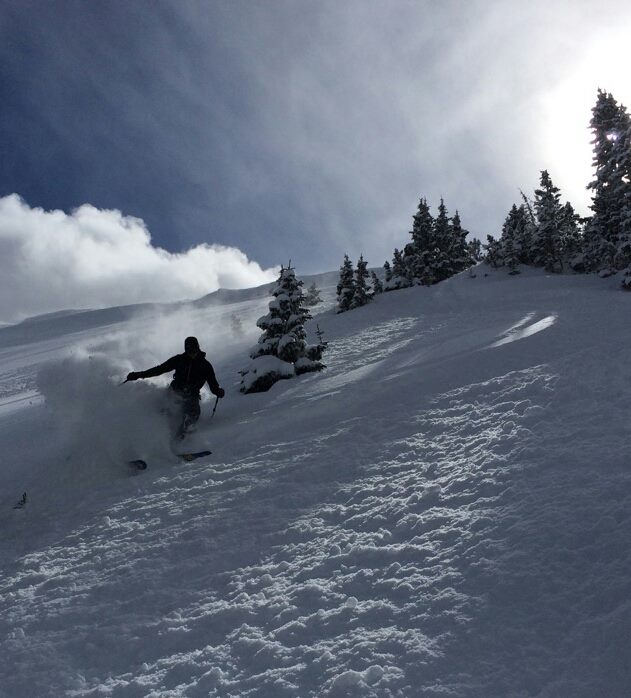 After
the approach and the ascent comes the fun part. The descent.
This is what all your hard work and sweat has led you to,
and is not only the most enjoyable part of your trip, but
also the most dangerous. It is also where your choice in ski
design fully comes into play. You could just point your tips
downhill and go, but you may find yourself going a bit too
fast for comfort if you do. Most skiers control their speed
simply by turning, which is also more fun than simply
straight-lining down the hill.
After
the approach and the ascent comes the fun part. The descent.
This is what all your hard work and sweat has led you to,
and is not only the most enjoyable part of your trip, but
also the most dangerous. It is also where your choice in ski
design fully comes into play. You could just point your tips
downhill and go, but you may find yourself going a bit too
fast for comfort if you do. Most skiers control their speed
simply by turning, which is also more fun than simply
straight-lining down the hill.  Faster skiers
will make long, wide, sweeping turns, while slower skiers
will make short quick turns. The length of the ski plays a
large part in how tight you can turn, and oftentimes
backcountry skiers will find themselves in tight chutes
known as couloirs where longer skis can severely limit
maneuverability.
Faster skiers
will make long, wide, sweeping turns, while slower skiers
will make short quick turns. The length of the ski plays a
large part in how tight you can turn, and oftentimes
backcountry skiers will find themselves in tight chutes
known as couloirs where longer skis can severely limit
maneuverability.Ski width and profile also makes a big difference here. Even the lightest skis can sink into the deep powder if they're small enough, but since deep powder isn't guaranteed, it's best to have a ski that is versatile and capable of handling a number of different conditions. Fatter skis with a rocker profile will float better in deep snow, but narrower skis with camber profile will provide better grip while turning on hard-packed or groomed snow.
The snow conditions also affect the descent in different ways. Deeper snow creates greater resistance, and if your slope isn't quite steep enough you may find yourself bogged down. On the other hand, hard-packed snow on steeper slopes can be dangerously fast and makes it much more difficult to maneuver.
 Home Page
Home PageGear Overview
Starting out: The Approach
At the Base: The Ascent
Snow and Avalanche Conditions
Bibliography